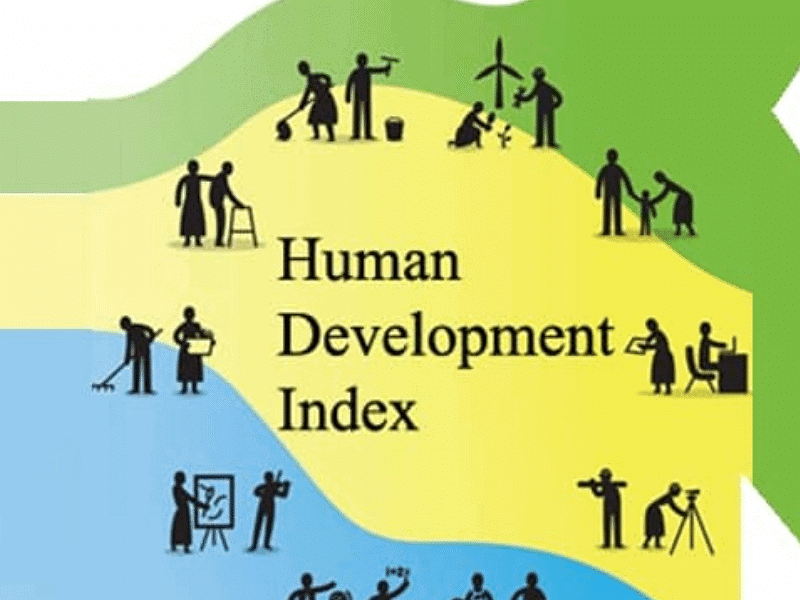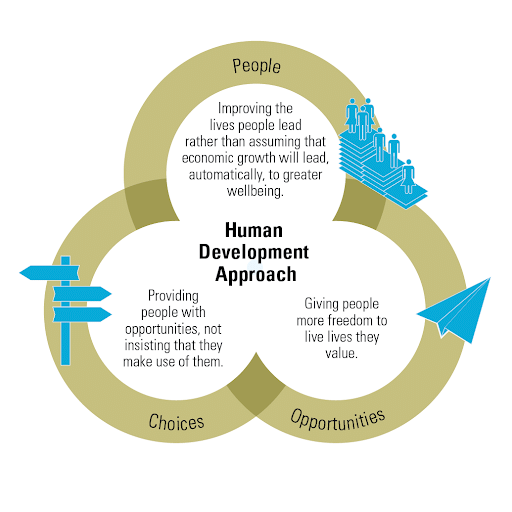Human Development Index (HDI) | SSC CGL Tier 2 - Study Material, Online Tests, Previous Year PDF Download
| Table of contents |

|
| What is the Human Development Index (HDI)? |

|
| Dimensions of Human Development Index |

|
| Importance of Human Development Index |

|
| Criticisms of Human Development Index |

|
The Human Development Index (HDI) evaluates a nation's social and economic progress by assessing three fundamental dimensions: the well-being of its population, the state of its education system, and the quality of living standards. The United Nations Development Programme (UNDP) is responsible for publishing the HDI.

What is the Human Development Index (HDI)?
The Human Development Index (HDI) assesses the quality of life through a combination of life expectancy, education, and income indicators.
Mahbub ul Haq from Pakistan and Amartya Sen from India introduced HDI as a supplementary measure to gross domestic product (GDP), emphasizing human development in the growth process.
HDI considers life expectancy, education, and gross national income (GNI) per capita, with higher scores indicating longer lifespans, higher education levels, and increased GNI.
The index serves as a comprehensive gauge of a country's overall well-being, offering a more holistic perspective than GDP alone.
Dimensions of Human Development Index

- Long and Healthy Life
- Life expectancy at birth is used to calculate the dimension of a long and healthy life.
- The life expectancy at birth is a statistical measure of how long an average person is expected to live based on demographic factors such as birth year and current age.
- Education
- The HDI's second dimension is education. The expected years of schooling and the mean years of schooling are the education indicators.
- According to the United Nations, the average maximum number of years of schooling is 18 years, while the mean maximum number of years of schooling is 15 years.
- Standard of Living
- The gross national income (GNI) per capita is commonly used to assess the standard of living.
- The GNP measures the total domestic and foreign output generated by a country's residents.
Importance of Human Development Index
- Comprehensive Measurement:
- The HDI considers multiple dimensions of development, encompassing life expectancy, education, and per capita income, offering a more holistic perspective than economic indicators like GDP.
- Human-Centric Approach:
- Focusing on life expectancy and education in addition to income, the HDI centers on the well-being and capabilities of individuals, recognizing that development is fundamentally about enhancing lives.
- Global Comparisons:
- The HDI facilitates straightforward comparisons between countries, aiding policymakers and researchers in evaluating a country's human development relative to others. This allows for the identification of best practices and areas needing improvement.
- Policy Guidance:
- Governments and organizations can leverage the HDI to pinpoint areas requiring attention and allocate resources for overall human well-being improvement. It guides policy decisions by highlighting gaps in education, healthcare, and income.
- Accountability:
- The HDI serves as a tool to hold governments accountable for the well-being of their citizens. It forms the basis for international discussions on development goals and progress.

Criticisms of Human Development Index
- Simplification: The HDI combines diverse indicators into a single index, potentially oversimplifying complex realities and interactions among dimensions of development.
- Limited Indicators: While the HDI captures important aspects of development, it does not consider factors like inequality, environmental sustainability, and political freedoms, which are also crucial for overall well-being.
- Weights and Aggregation: The method used to combine different indicators and assign weights can be debated. Some argue that the weights assigned to each dimension may not accurately reflect their relative importance.
- Data Quality: HDI calculations depend on the availability and accuracy of data, which may vary across countries and regions. Inaccurate or outdated data can distort the assessment of human development.
- Urban-Rural Disparities: The HDI can mask disparities between urban and rural areas within a country. National averages may not reflect the different challenges faced by different segments of the population.
- Subjective Factors: The HDI's indicators are objective, but the index does not consider people's subjective well-being, personal satisfaction, or happiness.
- Development vs. Sustainability: The HDI does not account for the environmental impact of development or a country's sustainable practices.
Conclusion
The Human Development Index is a valuable tool for assessing and comparing human development across countries, and it has played a significant role in shaping development policies and discussions. However, it is essential to recognize its limitations and consider other measures and indicators to ensure a more comprehensive understanding of development.\
|
1335 videos|1437 docs|834 tests
|
FAQs on Human Development Index (HDI) - SSC CGL Tier 2 - Study Material, Online Tests, Previous Year
| 1. What is the Human Development Index (HDI)? |  |
| 2. What are the dimensions of the Human Development Index? |  |
| 3. What is the importance of the Human Development Index? |  |
| 4. What are some criticisms of the Human Development Index? |  |
| 5. How is the Human Development Index calculated? |  |















